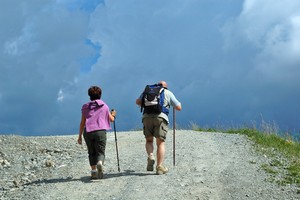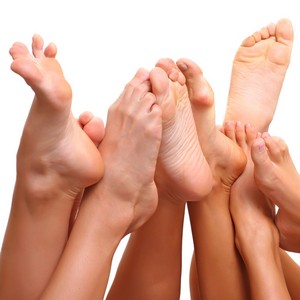 Hip PainHip and leg pain can come from several different sources. Injury in the lower back can cause pain referral into the hip and leg, or the pain may be the direct result of injury to the muscles, nerves, joints and/or ligaments of the leg and hip.
Hip PainHip and leg pain can come from several different sources. Injury in the lower back can cause pain referral into the hip and leg, or the pain may be the direct result of injury to the muscles, nerves, joints and/or ligaments of the leg and hip.Nerve “pinch”
Often pain referring down the leg is blamed on “sciatica" or a "pinched nerve". Nerves can be “pinched” in the lower back from a disc injury, with osteoarthritis and degenerative changes or from an injury.
- typical nerve pain is severe and sharp/stabbing
- can cause numbness, total loss of feeling or weaknesses
- true nerve compression is not very common. More often pain referral stems from muscle, joint and disc problems – even if the nerve is not being directly compressed the pain can still be severe
 Strained MusclesMuscle strain and myofascial pain
Strained MusclesMuscle strain and myofascial painThe leg, hip and foot contain dozens of different muscles. Muscle strains are very common, especially following physical activity.
- Pain can range from minor stiffness to severe pain and can refer pain throughout the leg and hip
- Pain is often triggered with stretching or resisted activity
The hip joint supports the entire body and has significant mobility. Because the joint itself is fairly stable, injuries are not as common as in other joints. Repetitive injuries can degrade the cartilage, leading to osteoarthritis.
Often "hip" pain is actually a muscle problem or tendon irritation from repetitive strains (tendinopathy).
 Knee PainKnee pain
Knee PainKnee painKnee pain is very common - often as a result of problems in other areas. Abnormal motion in the hip or foot/ankle can put excess strain on the knee and cause pain. The knee cap or patella is a common location of pain, either due to chronic strain (tendinopathy) or abnormal motion (patello-femoral syndrome).
- painful going up and down stairs
- often sore after activity
- usually can be resolved by treatment and exercises
- injured with twisting and compression, the meniscus can tear
- often feels like a catching or locking
- can be very painful
- may require surgery, but can often be managed with treatment and exercises
Hip and Knee pain can also be a result of bursitis, irritation of the lubricant fluid sac.
- can develop into a very swollen mass
- very sensitive
Sprains and strains are common in the foot/ankle joints and muscles. They often respond well to conservative treatments.
 Foot and Ankle PainWe also see a lot of problems related to poor biomechanics in the feet. Wearing proper shoes with good support is a start, but some people need orthotics to help correct the problem.
Foot and Ankle PainWe also see a lot of problems related to poor biomechanics in the feet. Wearing proper shoes with good support is a start, but some people need orthotics to help correct the problem.The Achilles tendon is also at risk of injury, either from repetitive strain or acute injury. Severe tears may require surgery but most problems can be managed with treatment and exercises.
Often pain is blamed on osteoarthritis. Degenerative damage like osteoarthritis can trigger pain episodes, but that pain often persists for other reasons. The goal of treatment is to identify the underlying factors for the reoccuring pain, and to bring those issues under control with a combination of treatment, home exercises and ergonomic changes.
Treatment
Treatment must always start with an appropriate diagnosis.
 TreatmentTreatments should focus on the underlying cause of the pain - both the tissue causing the pain as well as the factors triggering the problem. A combination of treatments, such as, massage, soft tissue treatments (Graston), manipulation/mobilization and/or home stretching exercises can be effective ways to reduce the tissue irritation.
TreatmentTreatments should focus on the underlying cause of the pain - both the tissue causing the pain as well as the factors triggering the problem. A combination of treatments, such as, massage, soft tissue treatments (Graston), manipulation/mobilization and/or home stretching exercises can be effective ways to reduce the tissue irritation.We identify aggravating factors and help you manage any issues through a program of self-care and prevention.
For a clinical assessment of your hip and leg pain, the triggers and best treatment options, please contact Bedford Chiropractic for an appointment.
